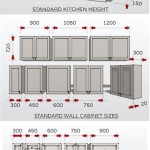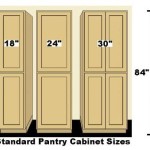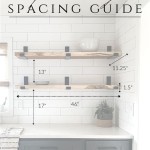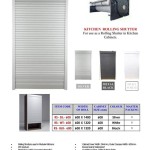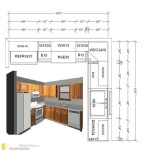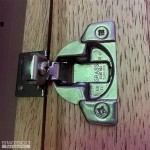Kitchen Wall Unit Fixing Height Requirements
Planning the layout and installation of kitchen wall units is crucial to ensure functionality and aesthetics. One of the most important considerations is determining the optimal fixing height for these units. The correct height will allow for easy access to stored items while ensuring the units are securely fixed and do not obstruct the work surface or other appliances. ### Determining the Ideal Height The recommended fixing height for kitchen wall units is typically between 150mm and 180mm above the work surface. This height provides a comfortable reach for most users, allowing them to easily retrieve items from the unit without straining or bending over. ### Factors to Consider When determining the fixing height, several factors should be considered: *Height of the user:
Taller individuals may prefer a slightly higher fixing height, while shorter individuals may find a lower height more comfortable. *Type of items stored:
If the unit will be used to store heavy or bulky items, a lower height may be beneficial for easier access. *Height of other appliances:
Consider the height of other nearby appliances, such as ovens or microwaves, to avoid any potential obstructions. *Work surface height:
The height of the work surface will also influence the optimal fixing height for the wall units. ### Standard Heights for Different Unit Types *Base cabinets:
850mm to 900mm *Wall units:
150mm to 180mm above the work surface *Overhead cabinets:
500mm to 600mm above the work surface ### Installation Guidelines To ensure proper installation and functionality, follow these guidelines: * Use a spirit level to ensure the units are level and secure. * Check the manufacturer's instructions for specific fixing requirements and load capacities. * Use appropriate fixings and screws for the wall material and weight of the units. * Consider adding additional support brackets or corner braces for heavier units. ### Conclusion Determining the correct fixing height for kitchen wall units is essential for both functionality and safety. By considering the height of the user, type of items stored, and surrounding appliances, you can ensure that the units are installed at an optimal height that provides easy access, prevents obstructions, and supports their intended load.
What Gap Do I Need Between The Worktop And Bottom Of Wall Units

How To Install Kitchen Cabinets The Wall And Floor With Ease

Kitchen Cabinet Mounting Height

How High To Hang Kitchen Cabinets On Wall

Kitchen Cabinet Mounting Height

3 Types Of Kitchen Cabinets Sizes Dimensions Guide Guilin

12 Tips For Installing An Kitchen Az Diy Guy

Kitchen Worktop Height Everything You Need To Know House Of Worktops

What Is The Standard Depth Of A Kitchen Cabinet

Kitchen Cabinet Installation Guide Step By
Related Posts


